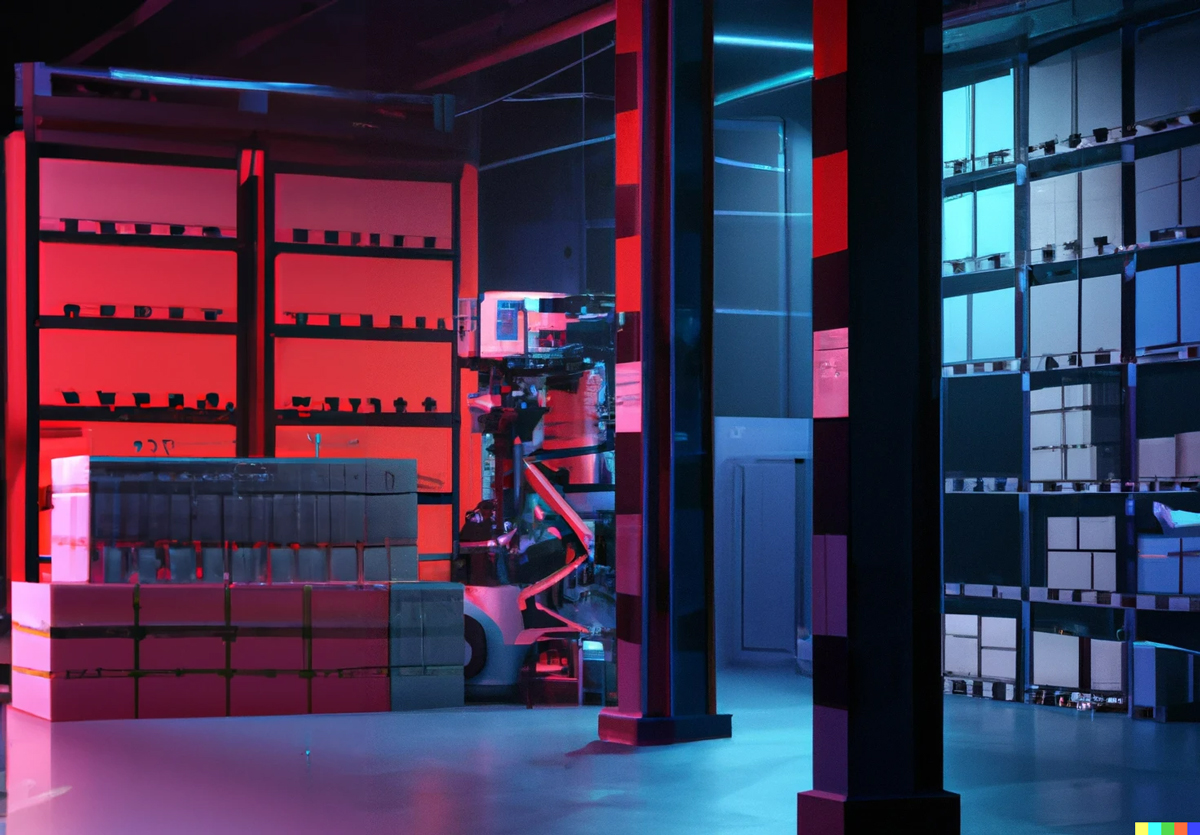Advancements in technology are driving the next industrial revolution, which has the potential to transform industries and economies around the world.
Summary: The next industrial revolution is upon us, and it is being driven by advancements in technology such as artificial intelligence, the Internet of Things, and robotics. This revolution is expected to transform industries and economies, with the potential to create new markets and products. Amazon, as the champion of the current industrial revolution, provides an example of what success in the next revolution may look like.
Introduction: The industrial revolution of the 18th and 19th centuries transformed the world, ushering in new technologies and manufacturing processes that revolutionized how goods were produced and consumed. Today, we stand on the cusp of the next industrial revolution, which is being driven by advancements in technology such as artificial intelligence, the Internet of Things, and robotics. This revolution has the potential to transform industries and economies around the world, and create new markets and products that we have yet to imagine.
The Success of Amazon: Amazon, the e-commerce giant founded by Jeff Bezos in 1994, is the perfect example of how the current industrial revolution has changed the way we do business. With a market capitalization of over $1 trillion, Amazon has transformed how we shop, how goods are delivered, and how businesses operate. Amazon’s success is due in large part to the company’s use of technology to streamline processes and create new markets. For example, Amazon’s use of machine learning and artificial intelligence to recommend products to customers has made shopping easier and more efficient, while its use of robotics in its warehouses has increased productivity and efficiency.
Automation and Robotics
Automation and robotics are the next wave of innovation and productivity in the next industrial revolution. Automation is already being used in the manufacturing industry, but with advances in technology, its scope will extend to other industries such as agriculture, transportation, and healthcare. Robotics, on the other hand, will become more sophisticated and intelligent, making them suitable for more complex tasks such as surgery and eldercare.
Amazon has already started using robots in their warehouses for picking and packing orders. The robots have significantly reduced the time it takes to fulfill orders, making Amazon even more efficient. As automation and robotics become more widespread, there will be fewer manual jobs and more jobs requiring technical expertise. Companies that embrace this change will have a competitive advantage, and those that resist it may be left behind.
Blockchain Technology
Blockchain technology is another aspect of the next industrial revolution that will have a significant impact on businesses. It is a secure and decentralized way of storing and sharing information, making it ideal for applications such as financial transactions and supply chain management.
Blockchain has already been adopted by some businesses for secure and transparent transactions. For example, Walmart uses blockchain to track the source of its produce to ensure its safety and quality. Other industries such as finance, real estate, and healthcare are also exploring the use of blockchain.
Artificial Intelligence
Artificial intelligence (AI) is another technology that is poised to revolutionize the way businesses operate. AI has already been used for tasks such as natural language processing and image recognition, but its applications will continue to expand.
One of the significant benefits of AI is its ability to analyze large amounts of data quickly and efficiently. This will enable businesses to make more informed decisions based on data rather than intuition. AI will also enable businesses to personalize their offerings and provide better customer service by analyzing customer data.
Amazon is already using AI to provide personalized product recommendations to its customers based on their browsing and purchase history. Other companies are also exploring the use of AI for personalized marketing and customer service.
The Next Industrial Revolution: So, what will the next industrial revolution look like? There are several key technologies that are driving this revolution, including:
- Artificial Intelligence: AI is already being used in a variety of industries, from healthcare to finance. In the next industrial revolution, AI is expected to play an even larger role, with the potential to automate tasks that were previously done by humans.
- Internet of Things (IoT): The IoT refers to the interconnected network of physical devices, vehicles, and buildings that are embedded with sensors and software. In the next industrial revolution, the IoT is expected to play a larger role in monitoring and optimizing industrial processes.
- Robotics: Robotics has been used in manufacturing for decades, but in the next industrial revolution, we can expect to see even more advanced robots that are able to work alongside humans.
- 3D Printing: 3D printing is already being used to create prototypes and small-scale production runs, but in the next industrial revolution, it is expected to play a larger role in mass production.
These technologies are expected to transform industries such as healthcare, manufacturing, transportation, and agriculture, among others.
The Impact of the Next Industrial Revolution: The next industrial revolution has the potential to create new markets and products that we have yet to imagine. For example, the use of robotics in manufacturing could lead to the creation of new, more efficient products that are cheaper to produce. The use of AI in healthcare could lead to new treatments and therapies for diseases that were previously untreatable. The IoT could lead to more efficient and sustainable use of resources, such as water and energy.
However, the next industrial revolution also poses challenges. One concern is the potential for job displacement, as more tasks become automated. Another concern is the need for regulatory frameworks to govern the use of these new technologies.
Conclusion
The next industrial revolution is already underway, and it promises to transform the way businesses operate. Companies that embrace new technologies such as automation, robotics, blockchain, and AI will have a competitive advantage, while those that resist them may be left behind.
Amazon has been the champion of the current industrial revolution, and it has embraced new technologies to become more efficient and innovative. The company’s success serves as an example for other businesses to follow as they navigate the next industrial revolution.
As the next industrial revolution progresses, there will be challenges and opportunities for businesses. Companies that are willing to innovate and adapt will thrive, while those that resist change may struggle to keep up. It is up to business leaders to make the right decisions and steer their companies towards success in the next industrial revolution.

